Find Help
More Items From Ergsy search
-
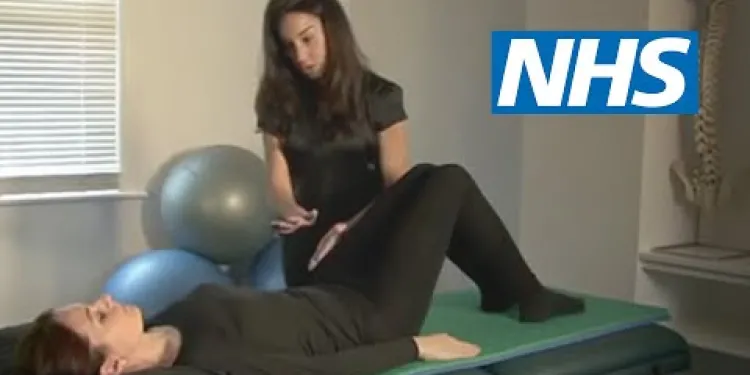
Exercises for sciatica: degenerative disc disease | NHS
Relevance: 100%
-

Exercises for sciatica: herniated or slipped disc | NHS
Relevance: 63%
-
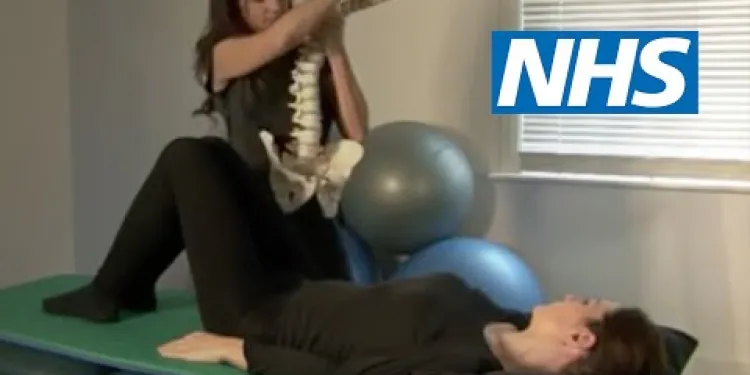
Exercises for sciatica: herniated or slipped disc | NHS
Relevance: 59%
-
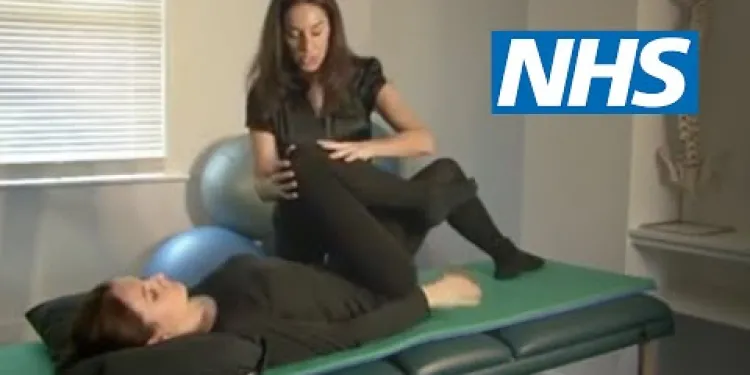
Exercises for sciatica: spinal stenosis | NHS
Relevance: 34%
-

Exercises for sciatica: piriformis syndrome | NHS
Relevance: 32%
-

Evidence-Based Interventions: injections for non-specific low back pain without sciatica
Relevance: 29%
-
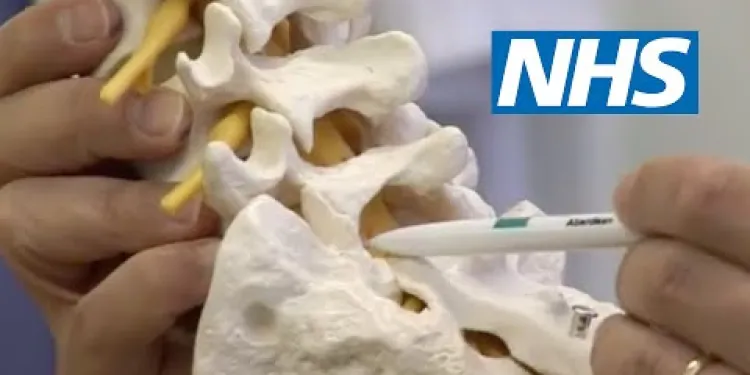
Lumbar surgery | NHS
Relevance: 21%
-

What causes motor neurone disease?
Relevance: 17%
-

Can lifestyle changes help manage Huntington's disease?
Relevance: 17%
-

Can Alzheimer's disease be prevented?
Relevance: 17%
-

Can Huntington's disease be prevented?
Relevance: 16%
-

How does Huntington's disease affect emotions?
Relevance: 16%
-

What is Alzheimer's disease?
Relevance: 16%
-

Neck Exercises
Relevance: 16%
-

Neck Exercises
Relevance: 16%
-

Introduction to Sickle cell disease
Relevance: 16%
-

Shoulder Exercises 1
Relevance: 16%
-

What is Parkinson's disease?
Relevance: 16%
-

What is Huntington's disease?
Relevance: 15%
-

How does Huntington's disease affect movement?
Relevance: 15%
-
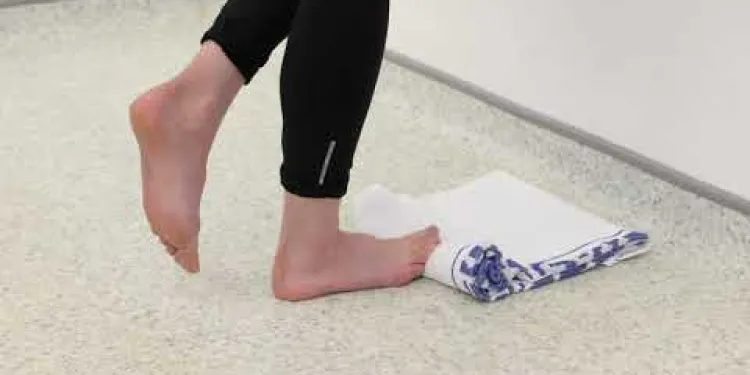
Plantar Fascia Loading Exercise (High Load Exercise)
Relevance: 15%
-

Will I be able to engage in physical exercise?
Relevance: 15%
-

What is heart valve disease?
Relevance: 15%
-

Facial exercise programme
Relevance: 15%
-
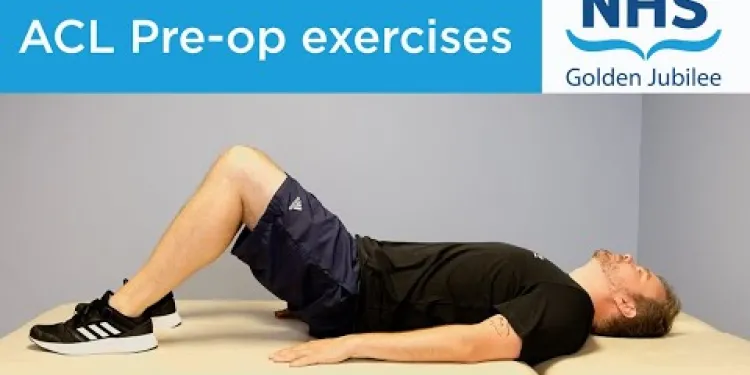
ACL pre-operation exercises
Relevance: 15%
-
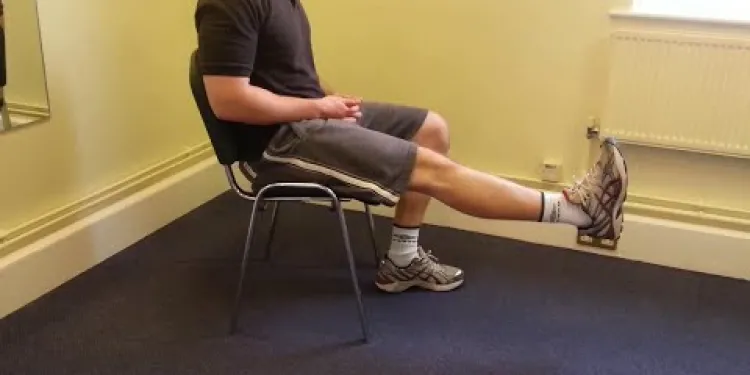
Knee Care Exercises
Relevance: 15%
-
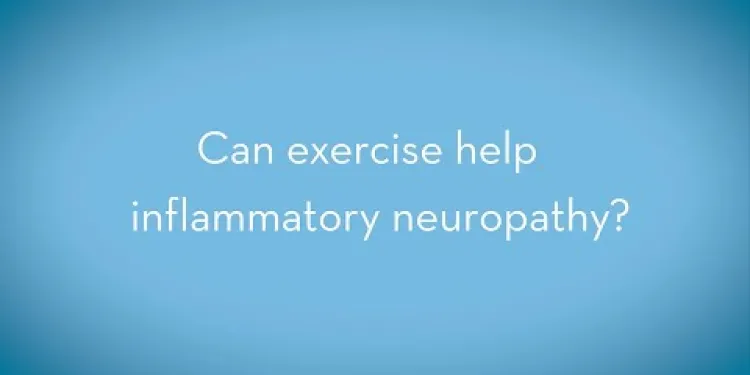
Exercise in patients with a neuropathy
Relevance: 15%
-

What causes Huntington's disease?
Relevance: 15%
-

What is motor neurone disease?
Relevance: 15%
-

How does motor neurone disease impact swallowing?
Relevance: 15%
-
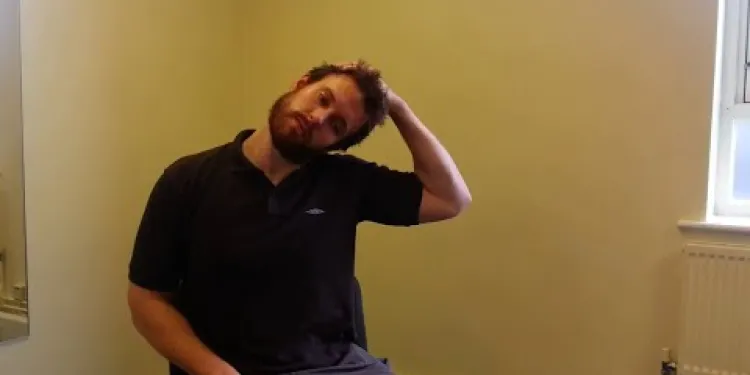
Neck Care Exercises
Relevance: 15%
-

Is it safe to exercise with a cold?
Relevance: 15%
-

ACL exercises post-operation
Relevance: 14%
-

Mechanical Lower Back Pain
Relevance: 14%
-

Living with early stage kidney disease
Relevance: 14%
-

Are there any exercises involved in air physiotherapy?
Relevance: 14%
-
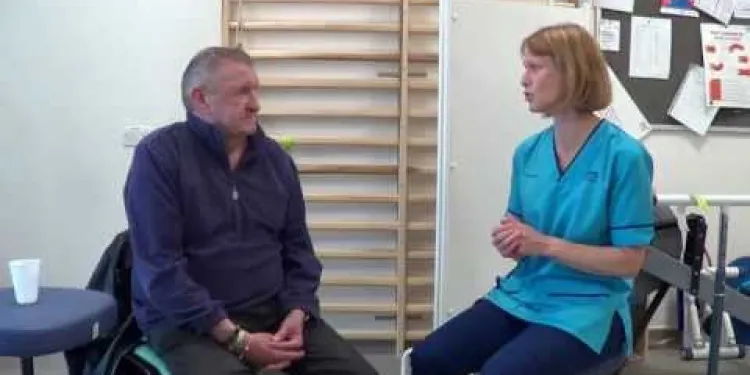
Clearing Your Chest with Breathing Exercises
Relevance: 14%
-

Liver disease | NHS
Relevance: 14%
-
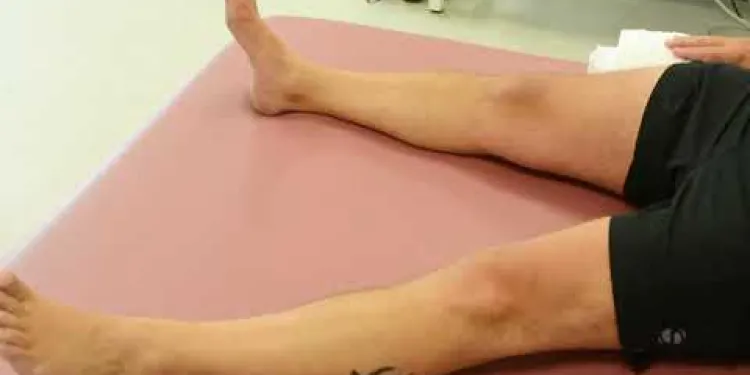
Joint School - Hip Exercises
Relevance: 14%
-
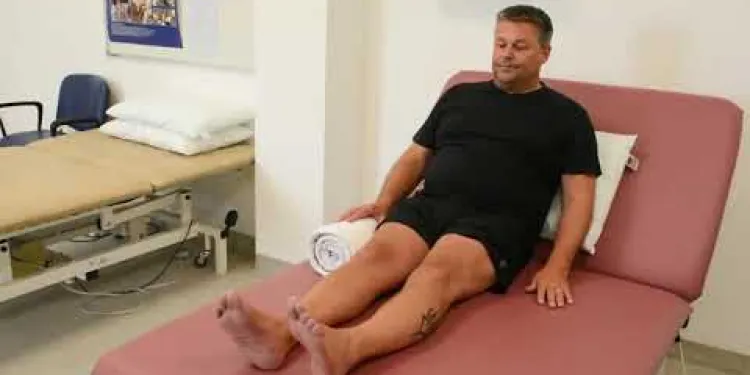
Joint School - Knee Exercises
Relevance: 14%
Exercises for Sciatica: Degenerative Disc Disease
Understanding Sciatica and Degenerative Disc Disease
Sciatica is characterised by pain that radiates along the path of the sciatic nerve, which extends from your lower back through your hips and buttocks and down each leg. Degenerative disc disease (DDD) refers to wear and tear on the spinal discs, which may lead to sciatica if the discs press on the sciatic nerve. The National Health Service (NHS) in the United Kingdom provides various recommendations for managing these conditions through appropriate exercises.
Benefits of Exercise for Sciatica and DDD
Exercise is crucial in managing sciatica caused by degenerative disc disease. Regular physical activity helps improve flexibility, strengthen muscles surrounding the spine, reduce pain, and prevent further disc degeneration. The NHS advises incorporating specific exercises tailored to target the symptoms and underlying causes of sciatica.
Low-Impact Aerobic Exercises
Low-impact aerobic exercises, such as walking, swimming, and cycling, are beneficial for individuals with sciatica and DDD. These activities increase blood flow to the affected area, which can promote healing and alleviate pain. Aim for at least 30 minutes of moderate-intensity exercise most days of the week.
Stretching Exercises
Stretching exercises can help improve flexibility and relieve tension in the muscles that might be contributing to sciatica pain. Common stretches recommended by the NHS include the hamstring stretch, piriformis stretch, and the knee-to-chest stretch. Perform these stretches gently and hold each position for 20-30 seconds, repeating several times a day.
Strengthening Exercises
Strengthening exercises focus on building the core muscles, including the abdominal, back, and pelvic muscles. Strengthening these muscles can provide better support to the spine and reduce the strain on the discs. Recommended exercises include pelvic tilts, bridging, and partial crunches. Consistently practice these exercises, aiming for two to three times a week.
Yoga and Pilates
Yoga and Pilates offer a combination of strengthening, stretching, and relaxation techniques that can be beneficial for managing sciatica and DDD. These practices emphasize core stability, flexibility, and controlled breathing, which can help reduce pain and improve overall spine health. Consider joining a class or following NHS-recommended routines.
Please consult with an NHS healthcare provider before starting any new exercise regime to ensure it is appropriate for your specific condition and to avoid worsening symptoms.
Exercises for Back Pain
What is Sciatica and Disc Problems?
Sciatica is when you have a pain that runs down your leg. It starts from your lower back and goes through your hips and bottom. This can happen if your back discs press on the nerve. When discs in the back wear out, it's called Degenerative Disc Disease (DDD). The NHS in the UK shares ideas to help with this through exercises.
Why Exercise is Good for You
Exercise is very important for back pain from worn-out discs. It makes you flexible and strong, and it stops the pain from getting worse. Exercise helps the muscles around your spine and makes them stronger. The NHS says doing the right exercises can help feel better.
Gentle Exercises You Can Try
Gentle exercises like walking, swimming, and cycling are good if you have back pain. They help blood move to hurt areas and can make you feel better. Try to do 30 minutes of these exercises most days.
Exercises for Stretching
Stretching helps make you more flexible and can ease muscle pain. The NHS recommends stretches like hamstring, piriformis, and knee-to-chest. Do these stretches gently and hold for 20-30 seconds, a few times each day.
Exercises to Make You Stronger
Strength exercises make your belly, back, and pelvis muscles stronger. These muscles help support your spine. Try doing pelvic tilts, bridging, and partial crunches. Do these exercises two to three times a week.
Doing Yoga and Pilates
Yoga and Pilates are great for helping with back pain. They focus on making muscles strong and flexible. They also teach you how to breathe and relax. You can join a class or follow NHS routines at home.
Always talk to an NHS healthcare provider before starting new exercises. They can make sure the exercises are safe for you and won't make your pain worse.
Frequently Asked Questions
What is sciatica?
Sciatica is a condition where the sciatic nerve, which runs from your lower back to your feet, is irritated or compressed. It usually causes pain, numbness, or a tingling sensation down the leg.
What are degenerative disc diseases?
Degenerative disc diseases refer to conditions where the spinal discs deteriorate over time, causing pain, discomfort, and reduced mobility in the spine.
How can exercise help with sciatica and degenerative disc disease?
Regular exercise can strengthen the muscles around the spine, improve flexibility, and reduce pressure on the sciatic nerve and affected discs, helping to alleviate pain and improve function.
What types of exercises are recommended for sciatica?
Exercises recommended for sciatica typically include stretching, strengthening, and low-impact aerobic exercises. Examples include hamstring stretches, pelvic tilts, and swimming.
Are there any exercises to avoid with sciatica?
Yes, you should avoid exercises that put excessive pressure on the lower back or involve twisting motions, such as heavy lifting, high-impact aerobics, and certain yoga positions.
How often should I do these exercises?
It is generally recommended to perform these exercises 2-3 times per week. However, it's important to consult with a healthcare professional for a tailored plan.
Can exercises relieve sciatica pain immediately?
While some exercises may provide immediate relief, consistent and regular exercise over time typically offers more significant benefits in reducing sciatica pain.
Should I consult a healthcare professional before starting exercises?
Yes, it is advisable to consult a healthcare professional such as a GP, physiotherapist, or specialist before starting any new exercise regime, especially if you have sciatica or degenerative disc disease.
Can walking help with sciatica?
Yes, walking can help improve mobility and reduce pain. It's a low-impact exercise that can be tailored to your comfort level. Ensure you wear supportive footwear and maintain good posture.
What is the role of core strengthening in managing sciatica?
Strengthening the core muscles helps support the spine, reducing the pressure on the sciatic nerve and the spinal discs, thereby alleviating pain and improving function.
How do I know if an exercise is making my sciatica worse?
If you experience increased pain, numbness, or tingling that persists or worsens after exercising, it may indicate that the exercise is aggravating your condition, and you should stop and consult a professional.
What are some simple stretches for sciatica relief?
Simple stretches for sciatica relief include knee-to-chest stretches, seated spinal stretches, and piriformis stretches. These can help reduce muscle tension and nerve irritation.
Can yoga help with sciatica and degenerative disc disease?
Yes, certain yoga poses can help improve flexibility, strengthen muscles, and reduce lower back pain. However, avoid poses that strain the lower back or involve twisting.
Is it safe to exercise with sciatica during pregnancy?
It's important to consult with your GP or midwife before starting or continuing any exercise regime during pregnancy. They can provide guidance on safe exercises tailored to your condition.
Can physical therapy help with sciatica and degenerative disc disease?
Yes, physical therapy can provide tailored exercise programs, manual therapy, and education to help manage symptoms, improve mobility, and strengthen the affected areas.
What is sciatica?
Sciatica is when you get pain from a nerve in your lower back. This pain goes down your leg.
If you feel pain, here are some things that can help:
- Rest when you need to.
- Try gentle stretches.
- A warm pack on your back might feel nice.
- A doctor or therapist can give you more help.
If the pain does not go away, tell a doctor.
Sciatica is when a big nerve in your body, called the sciatic nerve, gets squished or bothered. This nerve goes from your lower back all the way to your feet. Sciatica can make your leg hurt, feel numb, or tingly like pins and needles.
If you have trouble reading, you can ask someone for help. It might also be good to use tools like text-to-speech apps. These apps can read the words out loud to you.
What are degenerative disc diseases?
Degenerative disc diseases are when the discs in your spine get worn out or damaged. Discs are like cushions between the bones in your back. They help you move and bend. When they wear out, you might feel pain or have trouble moving.
If you have any problems, it's good to talk to a doctor. They can help you feel better.
Some people find it helpful to use picture books or videos to learn more.
Degenerative disc diseases happen when the discs in the spine get weak over time. This can cause back pain, discomfort, and make it hard to move.
How can exercise help with back pain and worn-out discs?
Doing exercise often can make the muscles around your back strong. It can help your body bend and move better. Exercise can also take away some of the pressure on your sciatic nerve and back bones. This can make pain go away and help you move better.
What exercises are good for sciatica?
Do you have sciatica? Sciatica is pain in your back, bottom, or leg. Certain exercises can help you feel better. Here are some you can try:
- Stretching: Stretch your back and leg muscles. This can help reduce pain.
- Walking: Going for short walks can be good for you.
- Swimming: Swimming can help. It is gentle on your body.
- Yoga: Simple yoga moves can help stretch and strengthen your body.
Remember to go slow and stop if you feel pain. You can also use supports like cushions or belts when you exercise. Talking to a physiotherapist can be helpful too. They can show you the best exercises for you.
If your back hurts because of sciatica, there are some exercises that can help. These exercises are stretching, strengthening, and gentle movements. Here are some examples:
- Stretch your legs, especially the back of your legs (these are called hamstring stretches).
- Do gentle movements with your hips, like rocking back and forth (these are called pelvic tilts).
- Try swimming, which is easy on your body and helps you move gently.
You can also use tools, like exercise bands or a mat, to help with these exercises. Doing these exercises regularly can make you feel better.
What exercises should I not do if I have sciatica?
Sciatica is when you have pain in your lower back and leg. Here are some exercises you should not do if you have sciatica:
- Heavy lifting: Do not lift heavy things.
- Twisting your back: Avoid exercises that make you twist your back.
- High-impact activities: Do not run or jump a lot.
- Sit-ups: Avoid sit-ups or crunches that can strain your back.
Here are some helpful tips:
- You can try gentle stretching exercises.
- Walking can be good to stay active.
- Ask a doctor or therapist for safe exercises.
Yes, you should not do some exercises that can hurt your lower back. These exercises might be lifting heavy things, doing fast and bouncy exercises, or doing yoga moves that twist your body.
How many times should I do these exercises?
It is good to do these exercises a few times each week.
Here is a tip: You can use a calendar or an app to remind you when to do them.
If you find it hard, ask someone to help you remember.
It is a good idea to do these exercises 2 to 3 times each week. But, it is important to talk to a doctor or nurse to get a plan that is right for you.
Can exercises help with sciatica pain right away?
Sciatica is a pain in your lower back and legs. Some exercises can help make this pain feel better quickly.
Here is what you can try:
- Stretch your back gently.
- Move your legs softly.
- Go for a little walk.
If it hurts too much, stop and rest. You can also ask a doctor or a physio for help.
Using helpful tools can make a difference:
- A warm heating pad can relax your muscles.
- An ice pack can numb the pain.
Remember to listen to your body and take it easy.
Some exercises might help your pain right away. But doing exercises often and regularly over time can help even more to make sciatica pain better.
Should I talk to a doctor before I start exercising?
If you want to start exercising, it is good to talk to a doctor first. They can tell you what exercises are safe for you.
Talking to a doctor can help you prevent injuries. It also makes sure you get the right exercises for you.
You can ask a family member or friend to go with you if you feel worried.
Using pictures or videos might also help you understand exercises better.
It’s a good idea to talk to a doctor before you start new exercises. This is important if you have sciatica or problems with your back.
You can talk to a GP, a physiotherapist, or a specialist to get advice. They can help you stay safe and make sure the exercises are okay for you.
Can walking help with sciatica?
Walking might help people who have sciatica feel better. Sciatica is when there is pain in the back and leg.
Walking can be a gentle way to exercise. It helps to make the muscles strong and can reduce pain.
Here are some ways to make walking easier:
- Wear comfortable shoes.
- Walk on flat paths.
- Take breaks if you need to.
- Walk with a friend if you can.
It is important to talk to a doctor before starting a new exercise.
Tools to help:
- Use a cane or walking stick for support.
- Try listening to music or a story while you walk.
Yes, walking can help you move better and feel less pain. It's an easy exercise that you can do at your own pace. Make sure to wear comfy shoes and stand up straight when you walk.
How can core strengthening help with sciatica?
Core strengthening can help with sciatica pain. The core muscles are in your tummy and back. They keep your body stable and strong.
When these muscles are strong, they help your back. This can make sciatica pain feel better.
Try simple exercises for your core. You can use tools like exercise balls. You can also ask a grown-up or a therapist to help you.
Making your tummy and back muscles stronger can help your spine. This takes pressure off the nerves and discs in your back, which can help stop pain and make moving easier.
How can I tell if an exercise is hurting my sciatica?
If your pain gets worse or you feel numbness or tingling after you exercise, it could mean that the exercise is making things worse. You should stop and talk to a doctor or someone who can help.
Here are some tips that might help:
- Pause exercise if you feel bad pain.
- Try gentle stretches instead.
- Use a heat or ice pack on sore areas.
- Ask someone to help you if you are worried.
It is important to listen to your body and get help if you need it.
Easy Stretches to Help with Sciatica Pain
If you have pain from sciatica, here are some easy stretches that might help you feel better:
- Knee-to-Chest Stretch: Lie on your back and gently pull one knee towards your chest. Hold it for a while and then switch to the other knee.
- Seated Spinal Stretch: Sit down and slowly twist your upper body to one side. Hold the stretch for a moment, then twist to the other side.
- Piriformis Stretch: Sit down and put one leg over the other. Slowly bend forward until you feel a gentle stretch in your buttock.
These stretches can help your muscles relax and may stop your nerve from hurting.
If you find it hard to follow, you can use pictures or watch a video about these stretches. This can make it easier to understand and do them right.
Can yoga help with back and leg pain?
Some people feel pain in their back, leg, or both. This can be called sciatica or have bad discs in their back.
Yoga might help! It can make you feel better, stretch your body, and keep it strong.
If you have pain, you can try some easy yoga moves. Get help from a yoga teacher if you can.
Always be gentle with your body and stop if it hurts. You can also talk to a doctor or nurse to get more help.
Yes, some yoga poses can make your body more bendy, make your muscles stronger, and help with pain in your lower back. But, don't do poses that hurt your back or twist it too much.
Here are some tips to make yoga easier:
- You can use a yoga mat so the floor feels soft.
- Go slow and don’t rush the poses.
- Ask a friend to do yoga with you.
- Use a video or book with pictures to help you.
Can I exercise if I have sciatica during pregnancy?
Having a baby can be hard on your back. Sometimes, you might get a pain called sciatica. It is important to be careful. Here are some tips:
- Talk to your doctor before you start any exercise. They can help you stay safe.
- Do simple, gentle exercises. Walking or swimming can be good.
- Stop if you feel pain. Listen to your body.
- Ask for help if you need it. A physiotherapist can show you exercises that help.
Your health and your baby's health are most important. Always be careful when you exercise.
Talk to your doctor or midwife before you start or keep doing exercises when you are pregnant. They can tell you what exercises are safe for you and your baby.
Can exercises and treatments help with back and leg pain?
Yes, physical therapy can help. It offers special exercises, hands-on help, and teaches you about your body. This can help with pain, help you move better, and make your body stronger.
Useful Links
- Ergsy carfully checks the information in the videos we provide here.
- Videos shown by Youtube after a video has completed, have NOT been reviewed by ERGSY.
- To view, click the arrow in centre of video.
- Most of the videos you find here will have subtitles and/or closed captions available.
- You may need to turn these on, and choose your preferred language.
- Go to the video you'd like to watch.
- If closed captions (CC) are available, settings will be visible on the bottom right of the video player.
- To turn on Captions, click settings .
- To turn off Captions, click settings again.
More Items From Ergsy search
-

Exercises for sciatica: degenerative disc disease | NHS
Relevance: 100%
-

Exercises for sciatica: herniated or slipped disc | NHS
Relevance: 63%
-

Exercises for sciatica: herniated or slipped disc | NHS
Relevance: 59%
-

Exercises for sciatica: spinal stenosis | NHS
Relevance: 34%
-

Exercises for sciatica: piriformis syndrome | NHS
Relevance: 32%
-

Evidence-Based Interventions: injections for non-specific low back pain without sciatica
Relevance: 29%
-

Lumbar surgery | NHS
Relevance: 21%
-

What causes motor neurone disease?
Relevance: 17%
-

Can lifestyle changes help manage Huntington's disease?
Relevance: 17%
-

Can Alzheimer's disease be prevented?
Relevance: 17%
-

Can Huntington's disease be prevented?
Relevance: 16%
-

How does Huntington's disease affect emotions?
Relevance: 16%
-

What is Alzheimer's disease?
Relevance: 16%
-

Neck Exercises
Relevance: 16%
-

Neck Exercises
Relevance: 16%
-

Introduction to Sickle cell disease
Relevance: 16%
-

Shoulder Exercises 1
Relevance: 16%
-

What is Parkinson's disease?
Relevance: 16%
-

What is Huntington's disease?
Relevance: 15%
-

How does Huntington's disease affect movement?
Relevance: 15%
-

Plantar Fascia Loading Exercise (High Load Exercise)
Relevance: 15%
-

Will I be able to engage in physical exercise?
Relevance: 15%
-

What is heart valve disease?
Relevance: 15%
-

Facial exercise programme
Relevance: 15%
-

ACL pre-operation exercises
Relevance: 15%
-

Knee Care Exercises
Relevance: 15%
-

Exercise in patients with a neuropathy
Relevance: 15%
-

What causes Huntington's disease?
Relevance: 15%
-

What is motor neurone disease?
Relevance: 15%
-

How does motor neurone disease impact swallowing?
Relevance: 15%
-

Neck Care Exercises
Relevance: 15%
-

Is it safe to exercise with a cold?
Relevance: 15%
-

ACL exercises post-operation
Relevance: 14%
-

Mechanical Lower Back Pain
Relevance: 14%
-

Living with early stage kidney disease
Relevance: 14%
-

Are there any exercises involved in air physiotherapy?
Relevance: 14%
-

Clearing Your Chest with Breathing Exercises
Relevance: 14%
-

Liver disease | NHS
Relevance: 14%
-

Joint School - Hip Exercises
Relevance: 14%
-

Joint School - Knee Exercises
Relevance: 14%


